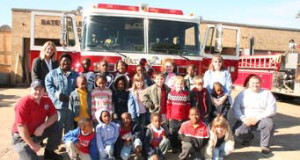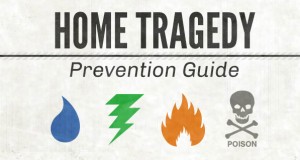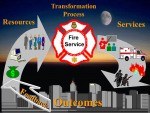What I found in my transition is a career that requires tremendous physical fitness in both strength and cardio, being able to think on your feet, working well under extreme stress, the ability to always work as a member of a team, and a desire to provide one of Maslow’s basic needs for humanity – to aid my fellow citizens in feeling safe in their communities.
Read More »Tag Archives: thought leadership
Community, Diversity and Your Department
But just as I was surprised by the positive feedback, I was also taken aback by some of the not-so-positive comments that I received. It would seem that some equate diversity as a means for giving someone a “free ride” or even reverse discrimination. The most common view was that it was simply a political ploy to appease the masses while discarding or at least skewing job requirements in favor of someone else simply because they were female or of a different ethnicity.
Read More »Fire + No Working Smoke Alarm in Your Home = You’ll Die
It’s time we in the fire service quit being so polite to people about the deadly threat that fire poses to them, their families, and their communities. It’s time to stop “suggesting” that it’s a good idea to have a working smoke detector on every level of their home. Time to stop “making excuses” for the dead following a preventable fire where no working smoke detectors were present. And it’s time to stop making excuses for parents who manage to get out of a burning home, but their children do not because the parents never had or practiced a Home Fire Escape Plan with their children.
Read More »Stop Romanticizing Firefighting!
Until we stop romanticizing the job of a firefighter with “how it used to be”, we will never get the current and future generations of firefighters to understand—really understand and take it to heart—that when you look at the facts, the vast majority of risks in the business of firefighting should have gone the way of the dodo bird.
Read More »Approachability—A Key Officer Characteristic
Approachability is a key leadership characteristic, but one that few leaders actively work to develop. Learn more about how to become more approachable as a Fire and EMS officer, or for that matter, anyone who leads, guides and directs people in accomplishing a mission.
Read More »Legacy in Action
Each of us who serve in the fire service, especially those of us privileged to have a leadership position, wants to leave a legacy. We want to feel that our time, energy, and contribution will have a lasting positive influence of the organization long after we hang up our helmet for the last time. I think this is especially true for those of us who—in addition to holding an officer rank—also embraced our roles as a teacher, coach and mentor
Read More »3 Tools for Sharing Organizational Knowledge
So how can we in the Fire & EMS profession more proactively “capture” such knowledge before it “walks out the door” with the next retiree? Let’s take a closer look at some of our “old and reliable” information management tools: policy, procedure, and processes. Frequently, we use these terms interchangeably, but they are not synonymous at all. However, if we understand how the “fit” together, we will find that they can serve as powerful tools to help transfer organizational knowledge from one generation of members to another.
Read More »Diversity: The Elephant in the Room
Every time you participate in off color conversations, it reflects the dark side of yourself. Every time you laugh, nod, agree, insert your two cents, sit quietly uncomfortably reading your iPhone HOPING IT ENDS SOON, looking at the speaker or simply clearing your throat you are participating in the conduct that is unbecoming of a firefighter. Did you know that?
Read More »Fire Department in Danger After Levy Fails
As Dr. Phil says, “It’s time to get real!” Fire departments must stop trying to provide a model of fire protection—one that’s predicated on saving lives and property through the reactive deployment of firefighters who implement an interior fire attack the majority of time—when the department does not possess the resources to do so safely, effectively, and efficiently according to accepted standards and practices, e.g., NFPA 1710 or NFPA 17.
Read More »Why Don’t We Tell Them?
In the absence of factual information, most people will believe whatever they hear or will Social media mind mapmake up their own version of reality based upon their past experiences. In today’s “informational overload” world there are more than a few ways for people in a community to know what the men and women of their fire and EMS department are “up to”, both good and bad. Successful departments are those who've embraced social media in a proactive way to engage their communities in two-way communication.
Read More » Fire & EMS Leader Pro The job of old firefighters is to teach young firefighters how to become old firefighters!
Fire & EMS Leader Pro The job of old firefighters is to teach young firefighters how to become old firefighters!








